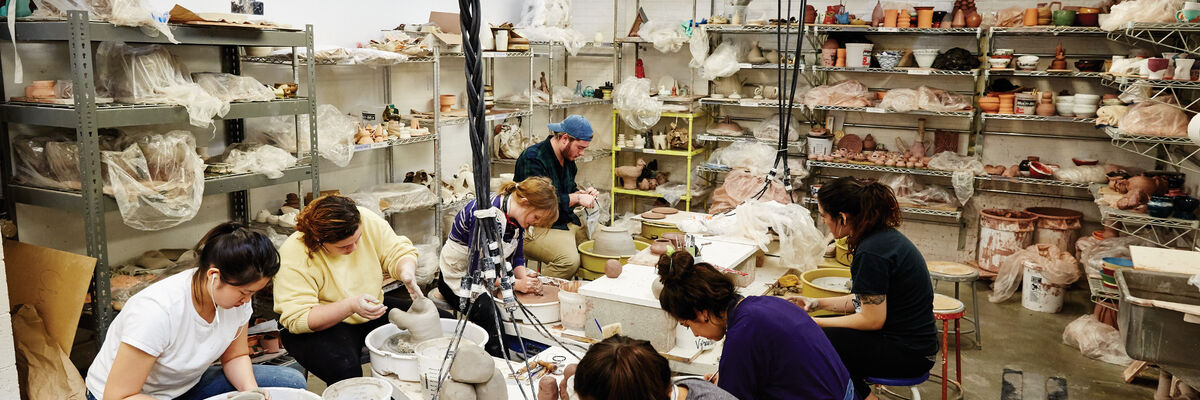
Drawing Dialogues
by Jessica Barrett Sattell (MA 2015)
Sounds of the city weave topographies of words. Mark Addison Smith (MFA 2008) captures threads of overheard conversations and transforms them into documentations of the imaginative capacities of everyday speech.
Currently an assistant professor in graphic design and visual communication at the City College of New York, Smith specializes in "typographic storytelling," or creating narratives through illustrative text within the forms of printed matter, artist's books, and site-specific installations. His work is included in the permanent collection of the Kinsey Institute at Indiana University and the special collections and archives of the James Branch Cabell Library at Virginia Commonwealth University.
Smith came to SAIC with a film background and found that the school's interdisciplinary environment encouraged him to explore how his camera-based storytelling talents could be applied to graphic design. As a graduate student in visual communication design, he experimented with books as "mini films," the printed medium allowing him to create nonlinear forms that engender multiple narratives. Through utilizing his handwritten script, the books take on a new layer; nuance and tone are conveyed in ways not found in set typefaces.
A combination of the structured and the unstructured encouraged him to push this creative output. "There's this element of structure and also this element of creative exploration," he explains. "Those two things together define graphic design."
Smith worked closely with his graduate adviser, Kay Rosen, an adjunct professor in Painting and Drawing. She encouraged him to employ rules and structures to answer, as he puts it: "How can you make your work hyper-focused, but hopefully speak to a large audience?"
A happenstance street encounter sparked an opportunity for Smith to explore the rigidity of rules as applied to the creativity of handwriting. "Six years ago in the Chicago Loop, a girl approached me and asked me for a cigarette. I don’t smoke, so I said, 'I'm sorry, I don't have one,'" he explains. "And then she looked me up and down, snapped her fingers and said, 'Aw, you look like the right type.' Then she ran down the street."
His You Look Like The Right Type series, a daily practice of eavesdropping on everyday dialogues and illustrating them, was born. He has been drawing every day since that first encounter in 2008 and posts each edition, which is conceived from first listen to final piece completely within 24 hours, to his website.
"In a way, the rules free me up because the decisions have already been made for the construct of the current project," he explains. "So, I don't have to think about that anymore. I just have to be alert to something that I hear, and how that gets transcribed, or conveyed with my pen."
In this series, commuting or a trip to the grocery store become opportunities for inspirational fieldwork. With an editor's impulse, Smith picks out fragments of overheard conversations that are powerful enough to stand on their own as miniature narratives. He then draws these with a consideration for the type, imparting hints to the context and the speaker's age and gender. The result is inherently participatory; viewers can try to guess the original occurrences of these phrases and then create their own stories to fill in the rest.
You Look Like The Right Type has been exhibited in venues such as A+D Gallery in Chicago, Kawaura Art Space in Kumamoto, Japan, Brooklyn Artists Gym, and MAGMA Brand Design's Slanted Magazine. When displayed together, the individual instances speak to one another, creating maps of larger conversations that fabricate unexpected dialogues stemming from fragmented speech. Smith acts as a visual translator, encouraging imaginative social interactions within the space between the auditory and the typeset.
